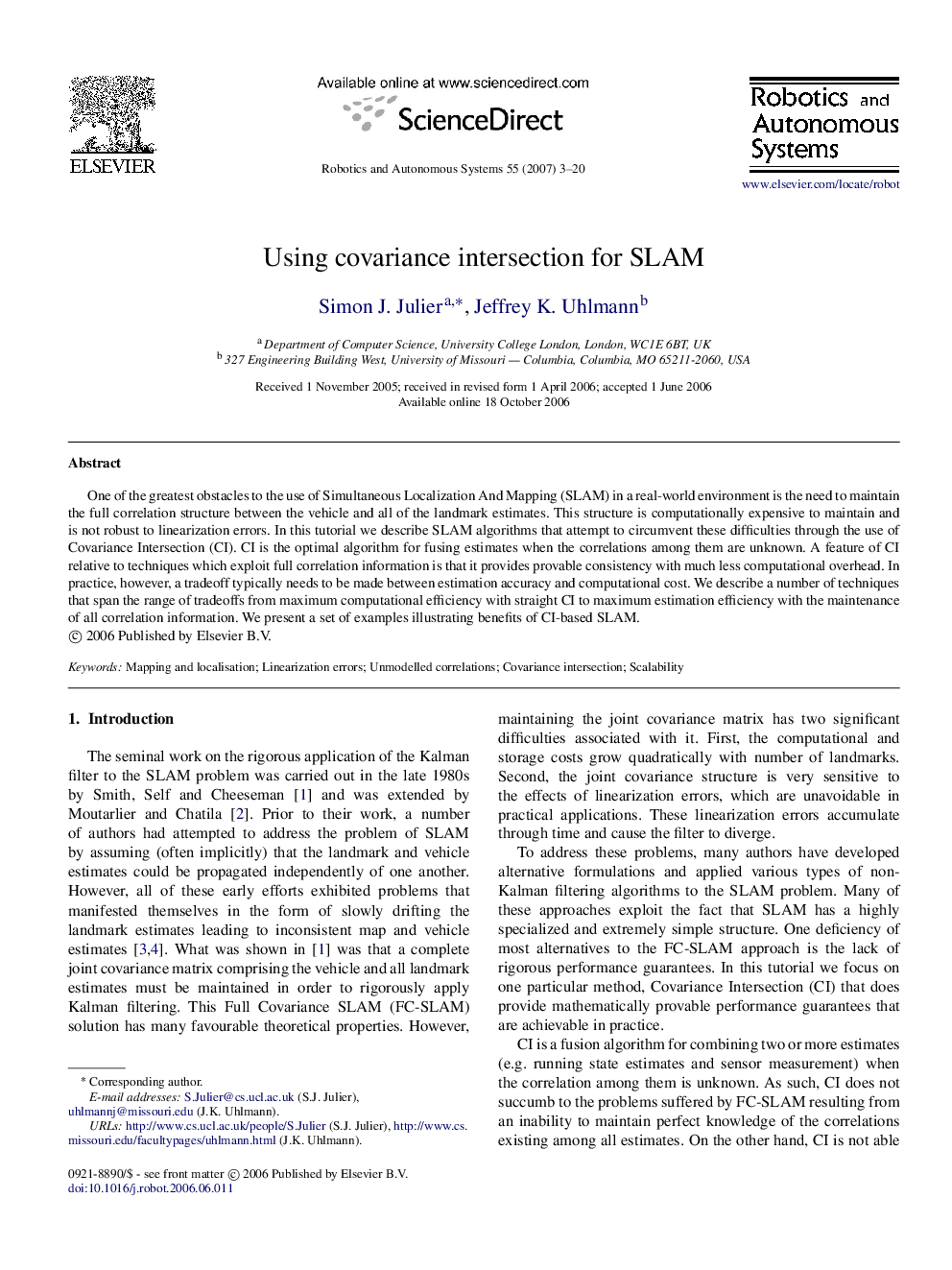| Article ID | Journal | Published Year | Pages | File Type |
|---|---|---|---|---|
| 413210 | Robotics and Autonomous Systems | 2007 | 18 Pages |
One of the greatest obstacles to the use of Simultaneous Localization And Mapping (SLAM) in a real-world environment is the need to maintain the full correlation structure between the vehicle and all of the landmark estimates. This structure is computationally expensive to maintain and is not robust to linearization errors. In this tutorial we describe SLAM algorithms that attempt to circumvent these difficulties through the use of Covariance Intersection (CI). CI is the optimal algorithm for fusing estimates when the correlations among them are unknown. A feature of CI relative to techniques which exploit full correlation information is that it provides provable consistency with much less computational overhead. In practice, however, a tradeoff typically needs to be made between estimation accuracy and computational cost. We describe a number of techniques that span the range of tradeoffs from maximum computational efficiency with straight CI to maximum estimation efficiency with the maintenance of all correlation information. We present a set of examples illustrating benefits of CI-based SLAM.
